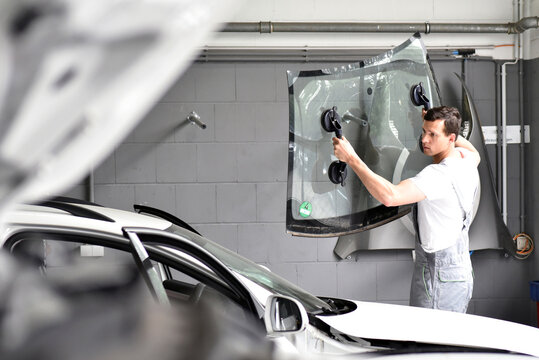The Art of Rear Glass Replacement: A Comprehensive Guide
Your car’s rear glass is not just a window to the world behind you; it’s also a vital structural component of your vehicle, providing rigidity and protection. Unfortunately, accidents and unforeseen mishaps can lead to rear glass damage, necessitating a replacement. In this comprehensive guide, we’ll explore the intricacies of rear glass replacement, from understanding the types of rear glass to the process involved and the importance of professional installation.
Types of Rear Glass
Before delving into the replacement process, it’s crucial to understand the various types of rear glass commonly found in vehicles:
- Tempered Glass: Most rear windows are made from tempered glass. This type of glass is designed to shatter into small, blunt-edged pieces when broken, reducing the risk of injury. However, it cannot be repaired and must be replaced entirely if damaged.
- Laminated Glass: Some high-end and luxury vehicles feature laminated glass for rear windows. Laminated glass consists of multiple layers with a layer of plastic sandwiched between them. It is known for its soundproofing and UV-blocking properties. Laminated glass can sometimes be repaired if the damage is minimal, but severe damage will still require replacement.
- Heated Rear Glass: Many vehicles are equipped with heated rear glass to improve visibility in cold weather. When replacing heated rear glass, it’s essential to ensure the heating elements are properly connected and functional.
The Rear Glass Replacement Process
- Assessment: The first step in rear glass replacement is a thorough assessment of the damage. Technicians will evaluate the extent of the damage, ensuring there are no hidden issues, such as structural damage to the vehicle’s frame.
- Safety Measures: Safety is paramount during rear glass replacement. Technicians wear protective gear, and the area around the vehicle is cleared to prevent accidents.
- Glass Removal: The damaged rear glass is carefully removed using specialized tools. In some cases, the interior trim and weather stripping may need to be temporarily removed to access the glass.
- Surface Preparation: The surface where the new glass will be installed is cleaned and prepared. Any remaining adhesive or debris from the old glass is removed, and a primer may be applied to promote proper bonding.
- Installation: The new rear glass is fitted precisely into the opening. Technicians ensure that it aligns correctly and fits securely. They also check that any heating elements or defrosting wires are properly connected.
- Adhesive Application: A high-quality adhesive is used to bond the new glass to the vehicle’s frame. The adhesive must be applied evenly to ensure a secure and watertight seal.
- Curing: The adhesive typically requires some time to cure properly. During this time, it’s crucial to follow manufacturer guidelines regarding curing times and temperature conditions.
- Quality Inspection: After the adhesive has cured, technicians conduct a final inspection to ensure that the replacement rear glass is properly installed, free from defects, and functions as expected.
Why Professional Installation Matters
While it may be tempting to attempt a rear glass replacement as a DIY project, it’s highly advisable to leave this task to trained professionals. Here’s why:
- Safety: Professionals have the expertise to handle glass safely, minimizing the risk of accidents and injuries.
- Proper Tools: Specialized tools are required for glass removal and installation, which professionals have readily available.
- Correct Alignment: Precise alignment is critical to ensure the glass fits properly and maintains the structural integrity of the vehicle.
- Warranty: Many auto glass replacement companies offer warranties on their work, providing peace of mind in case of any issues down the road.
Conclusion
Rear glass replacement is a complex process that demands precision, safety, and expertise. While it may be tempting to cut costs and attempt it yourself, the best course of action is to entrust this task to professionals who have the necessary skills and tools to ensure your safety and the structural integrity of your vehicle. When it comes to rear glass replacement, investing in professional service is always the right choice.
